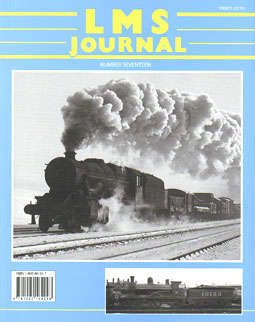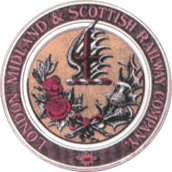LMS JOURNAL
Issues
LMSJ Issue 17
ISBN 1 905184 24 7
Contents
|

|
EDITORIAL
At the time of writing, we are approaching the end of 2006, which seems a good point to look back at what I think we have achieved to date. What is clear to me is that the reader profile is somewhat different to those who take our sister magazine, Midland Record. Therefore I am sure that those readers who take both publications will be pleased to hear that they will continue to retain their separate identities. However, in reviewing the 'divisional split' of material, it is apparent that for some reason the old Midland Division of the LMS appears to have been the subject of more articles than other divisions. Both the Western and Northern Divisions have been well covered but the poor relation is the Central Division and in 2007 and beyond I would like to see more material from this part of the LMS published in LMS Journal.
Recording operating practice is a vital part of our railway history. The authors of many railway publications today, when writing about the steam era, lack first-hand knowledge and as a result their work often displays a lack of understanding of the subject. We can only help future generations understand the finer points of the steam era if those with personal experience record it in some detail, but, with each passing year, their numbers decrease. Fortunately, a number of old railwaymen have made their stories available to LMS Journal. I would like to cover as many different aspects of railway work as possible so I ask readers to let me know if they are able to help by recommending anyone who they believe has a story to tell, especially recollections of operational routines at particular yards and stations. In many respects it is the more mundane jobs that are least recorded and understood.
One feature of LMS Journal that is appreciated by many readers is the information we publish that helps them with modelling projects. A good example is the signalling articles by Graham Warburton that help modellers to build accurate signals for their layouts. Very favourable comment has also been received about what I call 'policy' articles that explain why the LMS undertook certain courses of action and why they did things in a particular way. We intend to continue with this theme in the future.
Before I close, I would like to advise readers about progress with the LMS Locomotive Profile series edited by David Hunt. Many readers asked why we went from No. 6 to No. 8 and where was No. 7. The thinking was that if we kept the Class 5s together as Nos. 5, 6 and 7, together with their Photographic Supplements, then those readers who bind the parts could have a complete volume devoted to the Class 5s in an unbroken number sequence. Furthermore, this numbering sequence enabled the Class 8Fs to be No. 8 in the series. Number 10, due to be published in the first half of 2007, will deal with the Midland and LMS Class 4Fs and will also have a Photographic Supplement.
In conclusion may I thank all readers and contributors for their support during the past year and hope they will continue to enjoy LMS Journal.
Bob Essery
Site contents Copyright © Cygnet Magazines Limited, 2014-2025.




